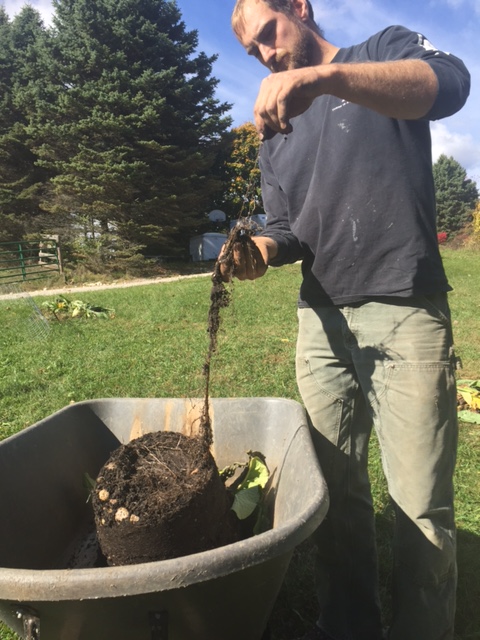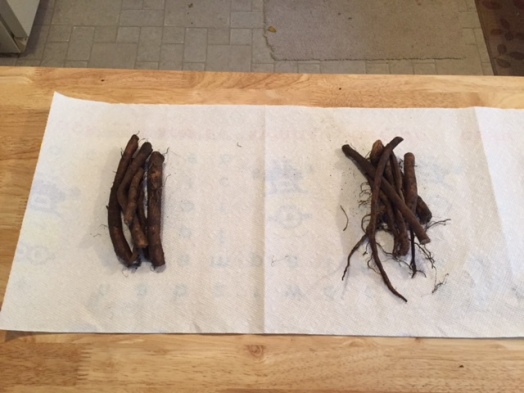Never heard of the amazing Comfrey plant and its many uses?
Well, let me introduce you!

I was introduced to comfrey well over a year ago when my boyfriend filled my room in college with 3 baby comfrey roots, which I was supposed to nurture. He called it a miracle plant and told me that it could do amazing things, but I was unconvinced. How could this plant be so amazing, if I had never heard of it!? However, after seeing it at work in our garden, using it for first aid relief and researching it, I have become a believer.
The plant, itself, is extremely humble. It does not have gorgeous leaves or flowers or any sort of fantastic smell, but it DOES have an unusual aptitude for benefiting both humans and nature!

Here are 5 reasons you should respect and GROW comfrey:
- It’s ridiculous tap root! This plant has a SUPER deep tap root, which breaks up the soil and draws minerals and nutrients to the top soil. By drawing up these hard to reach minerals, other plants with shallow root systems, like most items in a garden, are able to access the goodness.

- Cheap & effective mulch: Comfrey can be cut and laid around trees or vegetables in the garden. It not only acts as mulch to protect the soil and keep it healthy, it also gives its minerals and nutrients (Silicon, Nitrogen Calcium, Phosphorus, Potassium, Iodine, Iron, and other trace minerals ) to the plants around which it is laid.

- Super accessible & natural fertilizer: Like I mentioned above, this plant can be used by just cutting the leaves and laying them throughout the garden or food forest. It can also be blended with water into a comfrey smoothie, or soaked to create a compost tea, and then poured and mixed throughout the garden soil.

- Hardy perennial: One of my favorite qualities about this plant is its tenacity! I LOVE plants that do not require a ton of work, and comfrey is one of them! Comfrey requires a fairly wet environment when it is first getting started, but once it sprouts, it is a hearty perennial that will continuously grow. It is safe to cut leaves off of comfrey plants throughout the growing season and use it for mulch and fertilizer, without fear of killing it. While this can be a positive trait, it can also be frustrating, because once comfrey is planted, it can be hard to get rid of. In addition, if it is not tended properly, it can spread quite easily. Therefore, be conscientious about where it is put and how far you let it spread. (If you really want to kill it, pull out the entire root, and plant over it with grass/sod)

- Its ability to “knit” bones and flesh together: Comfrey is Latin for “to knit together” or “to grow together”, and it has proven medicinal properties. NOTE: when taken in large doses and given to rats, it was shown to cause liver damage!! However, when used specifically for injuries like cuts, wounds, or broken bones, it can heal very well! According to an article published by the “University of Maryland Medical Center”, “Comfrey roots and leaves contain allantoin, a substance that helps new skin cells grow, along with other substances that reduce inflammation and keep skin healthy. Comfrey ointments have been used to heal bruises as well as pulled muscles and ligaments, fractures, sprains, strains, and osteoarthritis” Because comfrey is so high in protein, calcium, and vitamin C, it provides a great salve for healing. Personally, I have tried comfrey on some scars I have on my leg, and they seem to be lessening, although, the injury may be too old to really take advantage of comfrey’s healing benefits. Overall, I think that used topically comfrey has some very real medicinal benefits, and I really enjoyed reading about comfrey oil and its ability to treat skin rashes, various infections, and bone fractures on Dr. Mercola’s website.


Comfrey roots wrapped in damp paper cloths and ready to send to their new homes! There is a little taste of my ensuing adventure with comfrey. I am still learning to use this plant, and I am excited to gain insight! Please share your comfrey experiences with me, and if you would like to get started with some of your own comfrey, you can find ours for sale here: OR you can head over to the “Business” tab of this website and contact me for your own comfrey roots!
Some resources I found helpful:
http://permaculturenews.org/2010/10/01/the-wonderful-multi-purpose-comfrey-plant/


Awesome !!! Good luck with your project and website 🙂
Will you do youtube videos? 😉
Laetitia
LikeLike
Thank you!! Yes, in fact, I do plan to incorporate some YouTube videos. I have done a few sporadically, but I would like to link them to this project and brand name, and be more consistent about it.
LikeLike